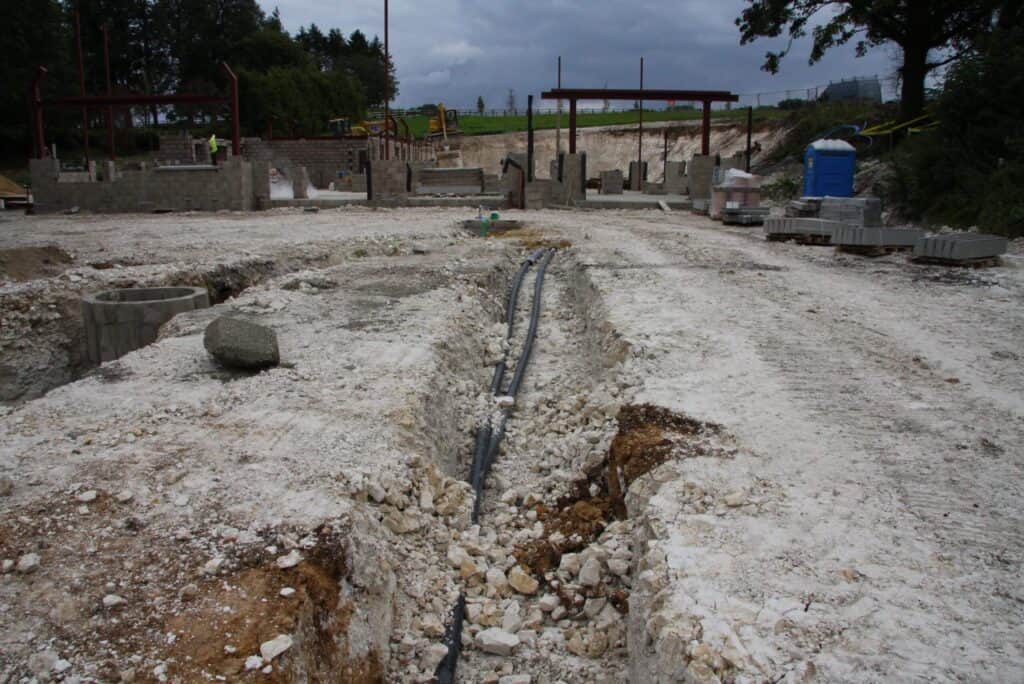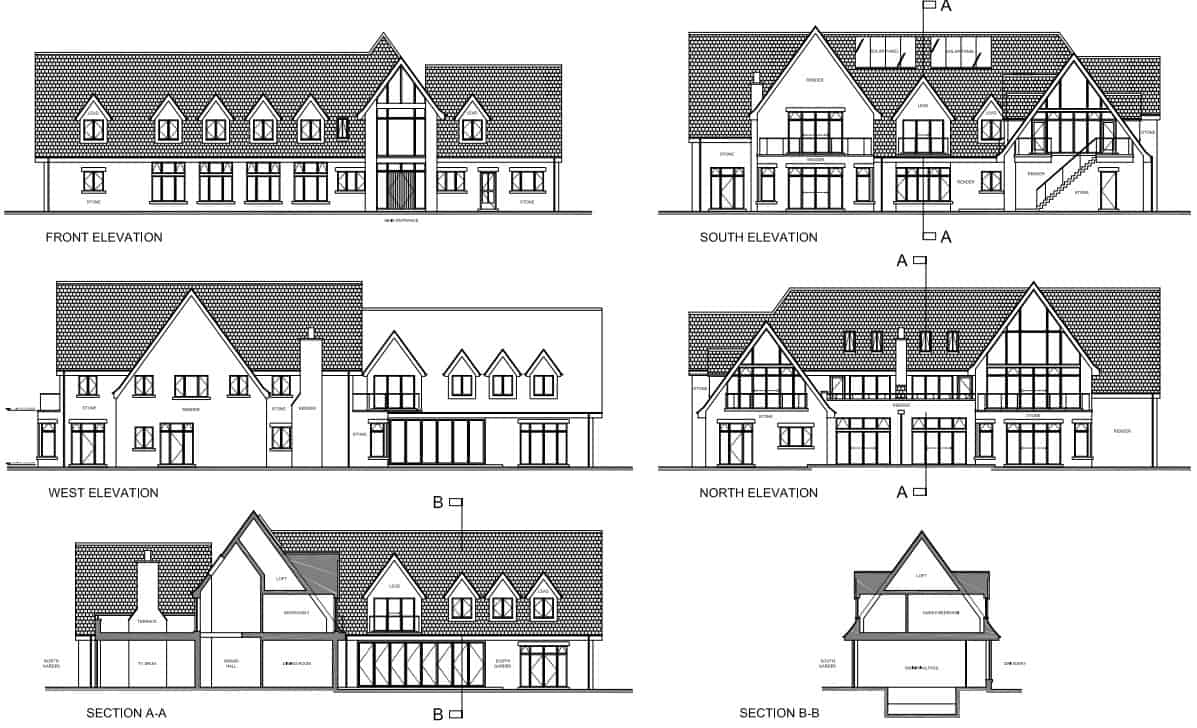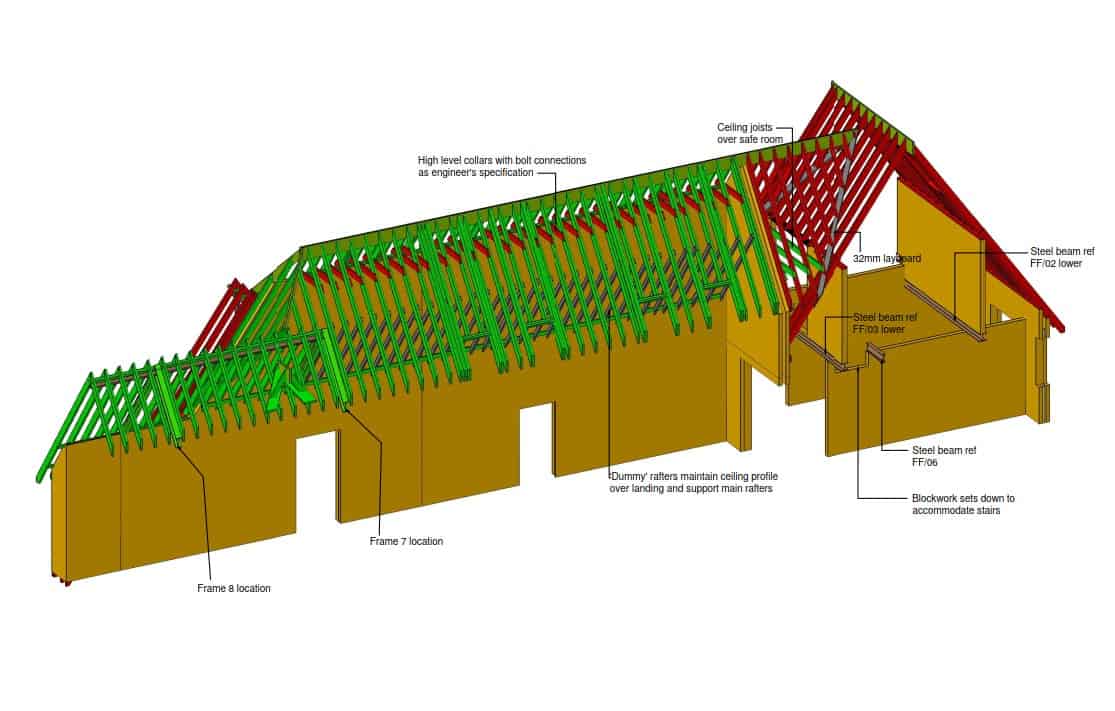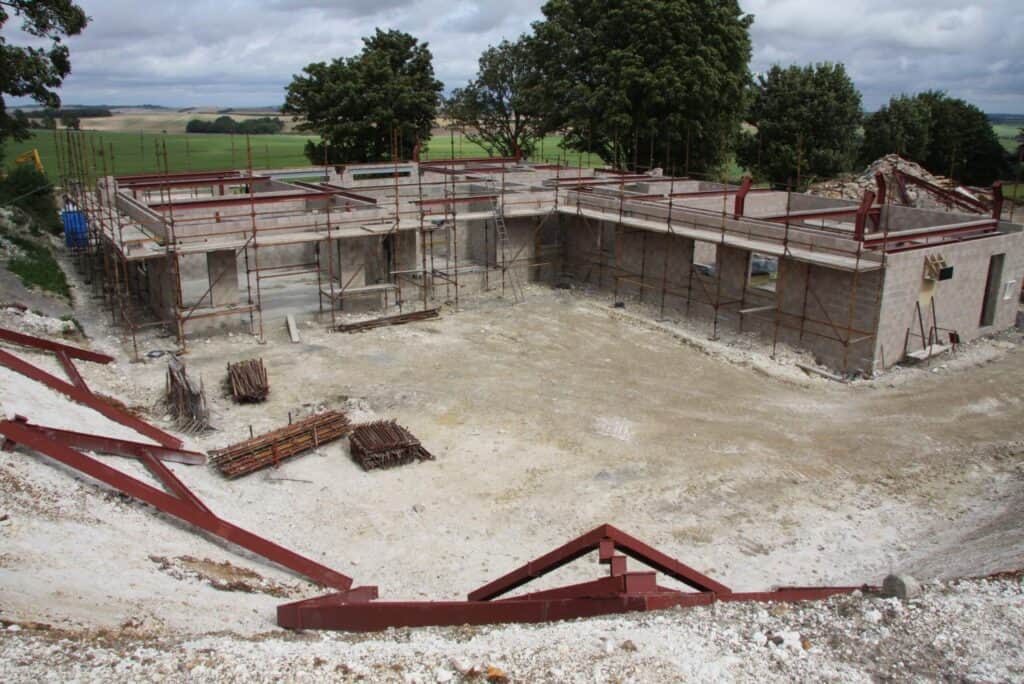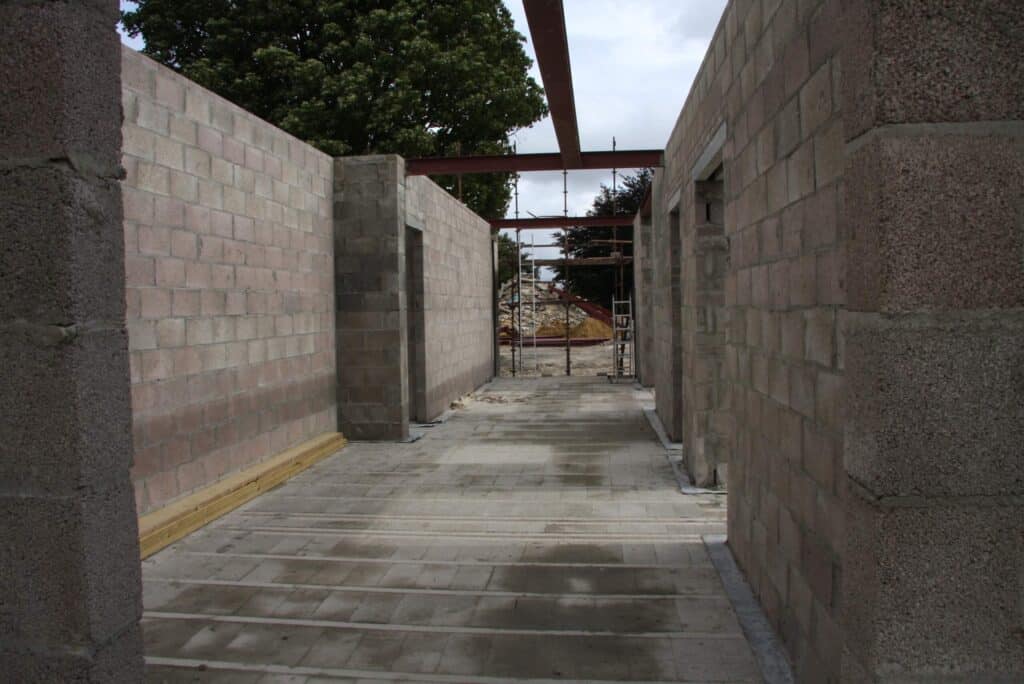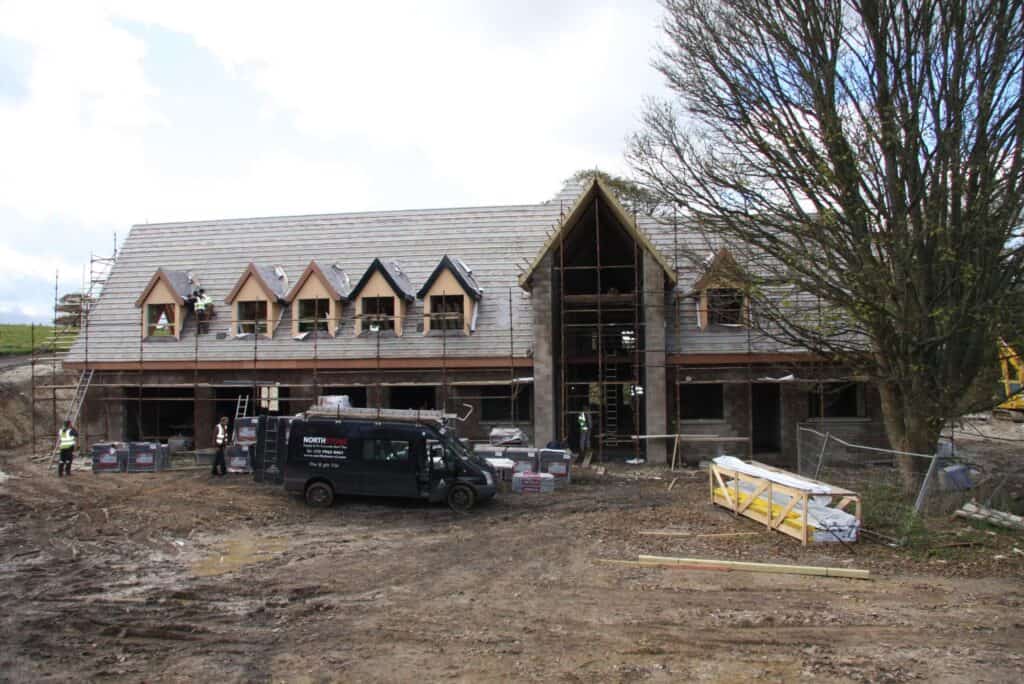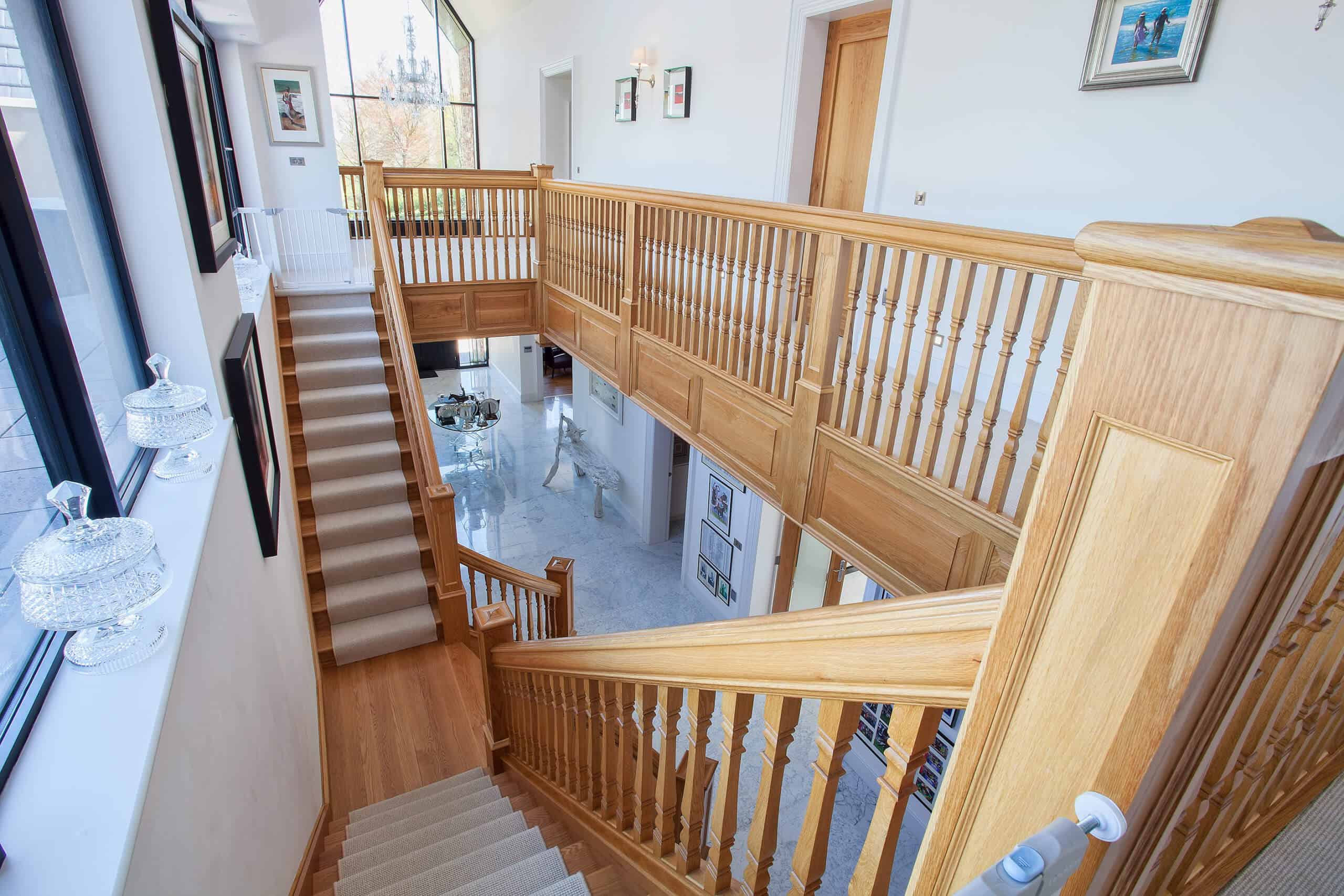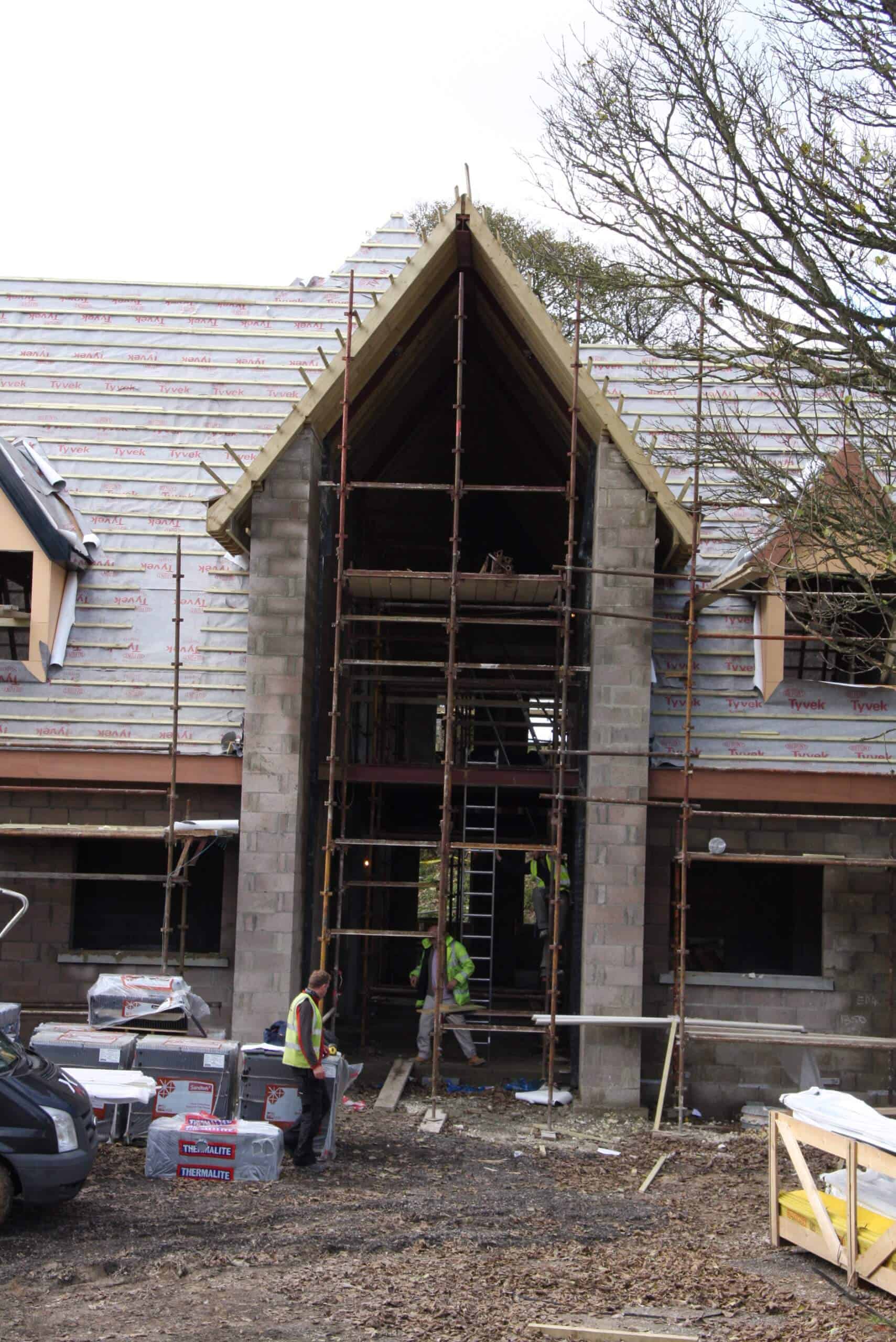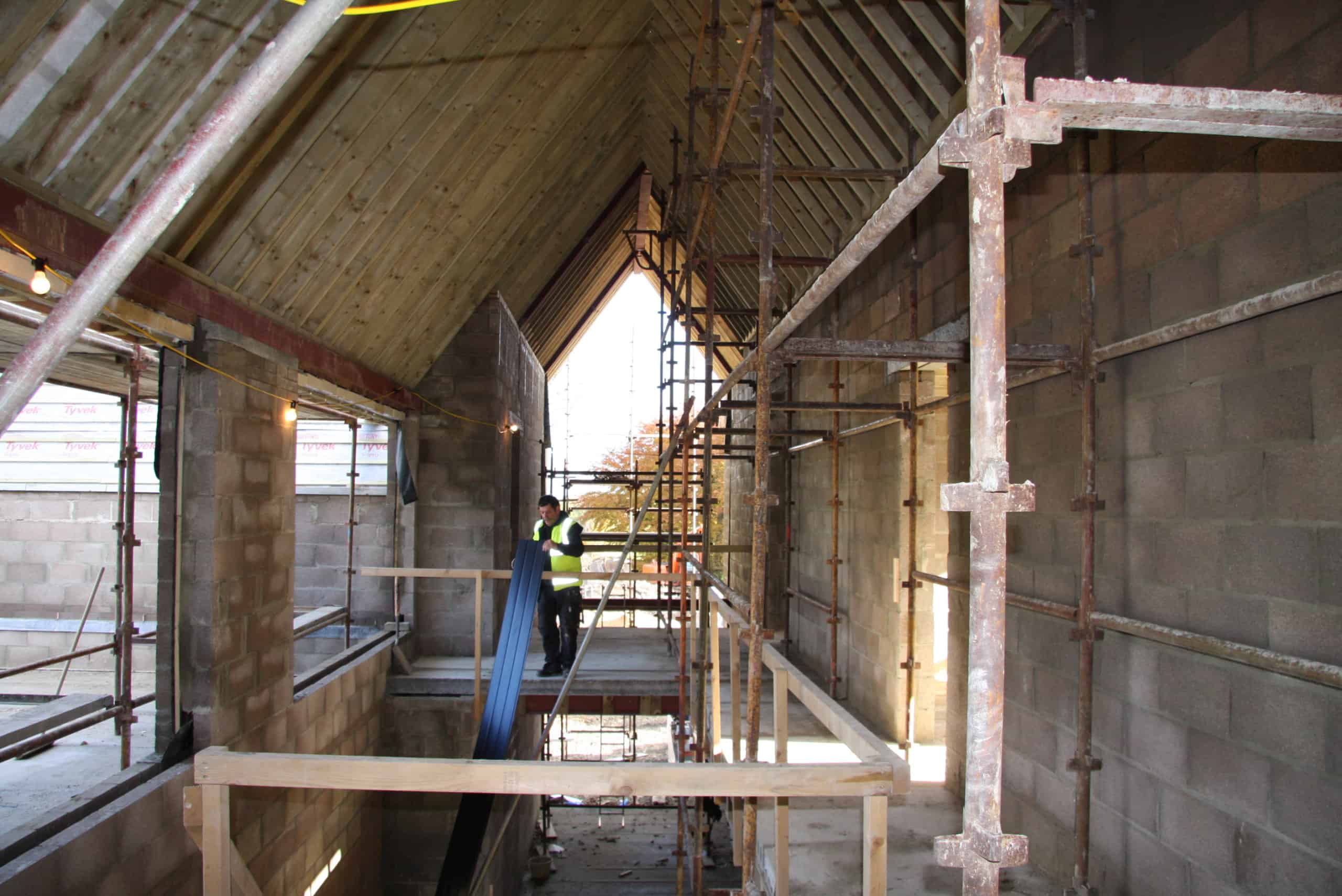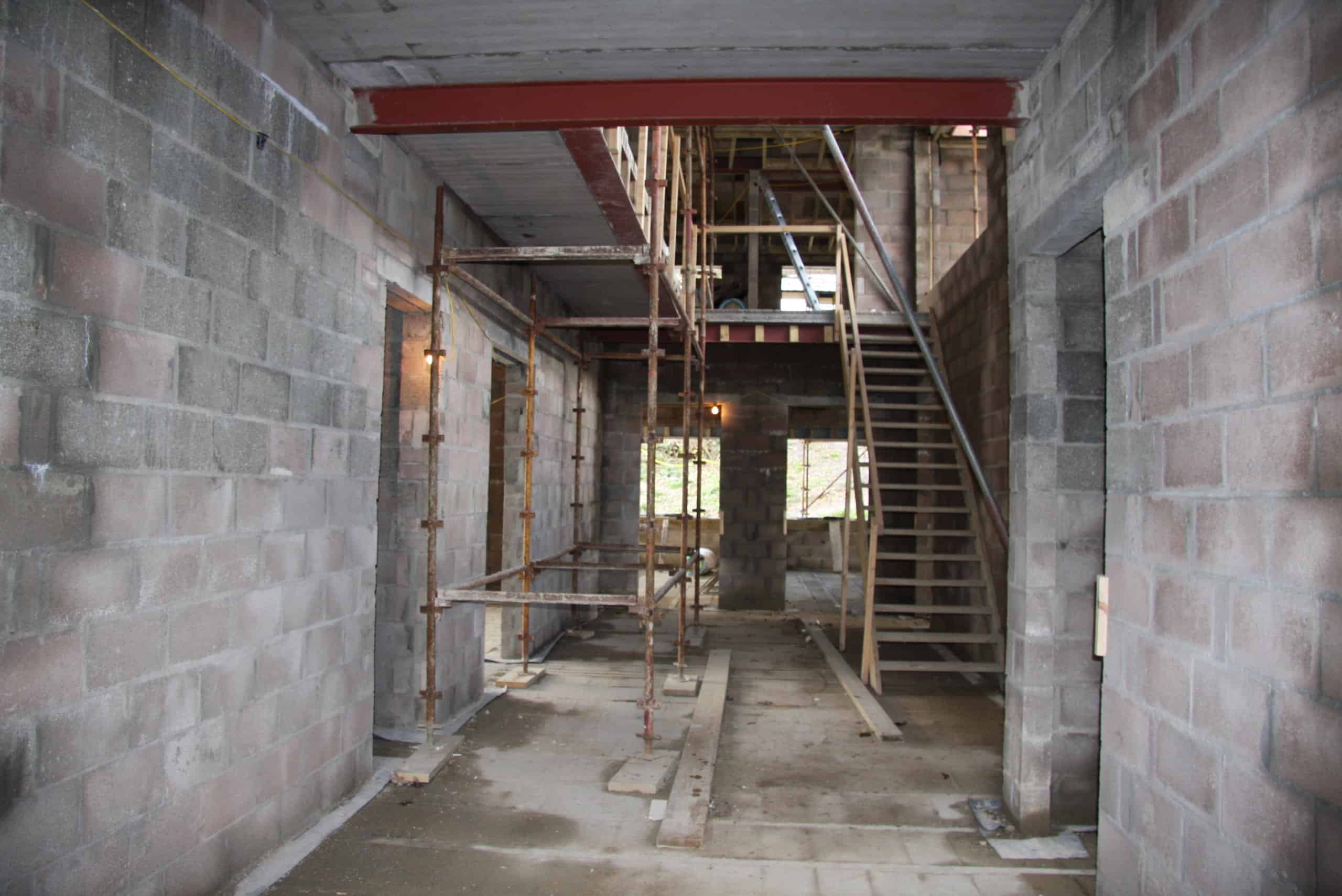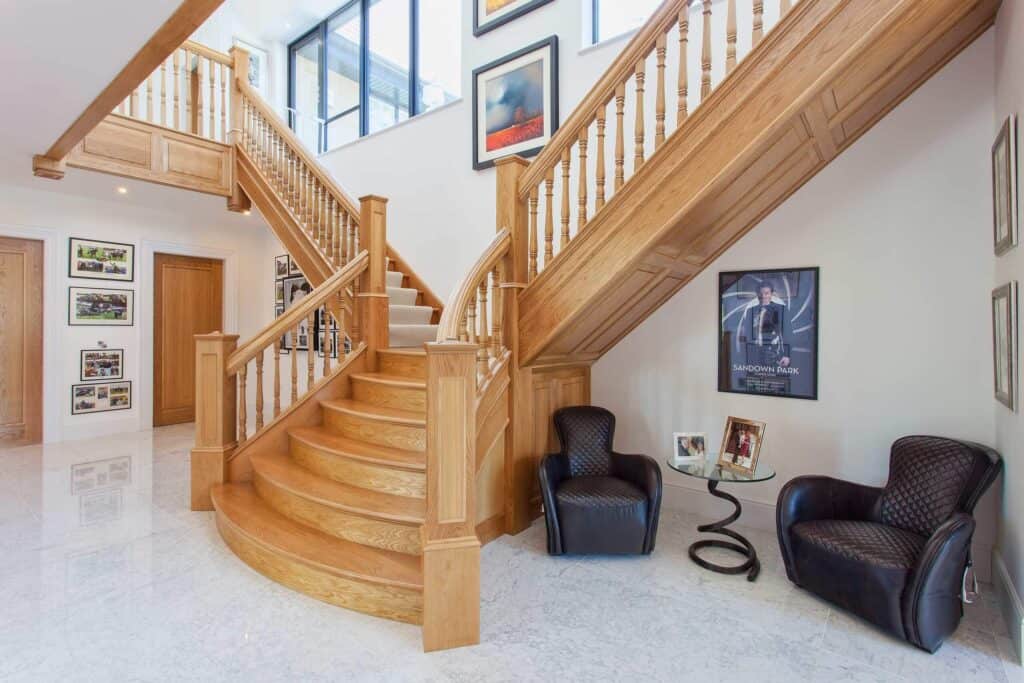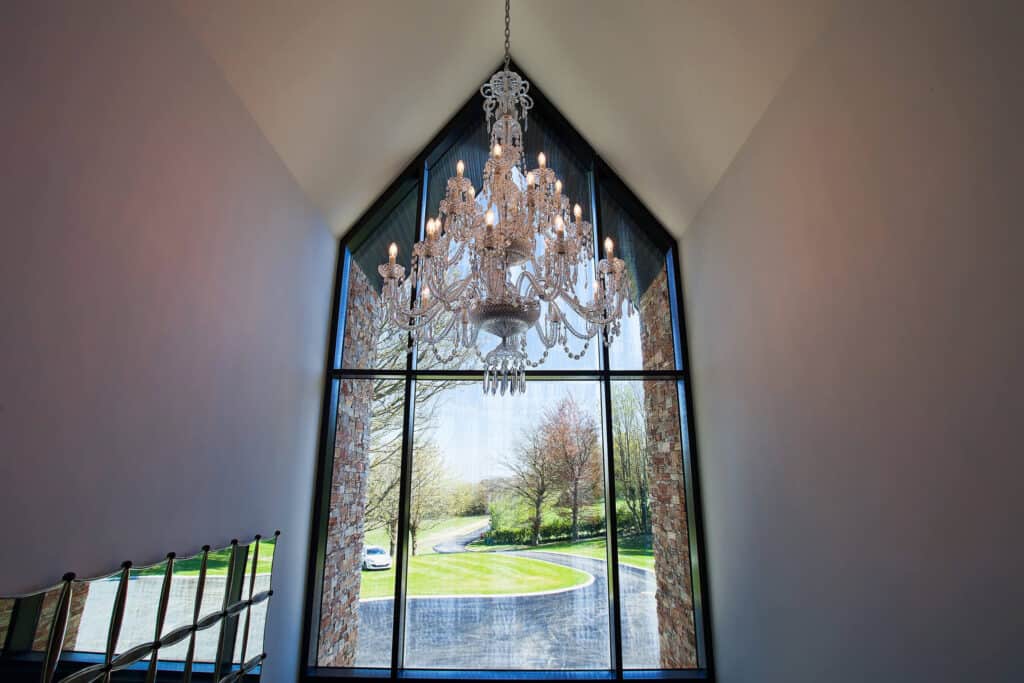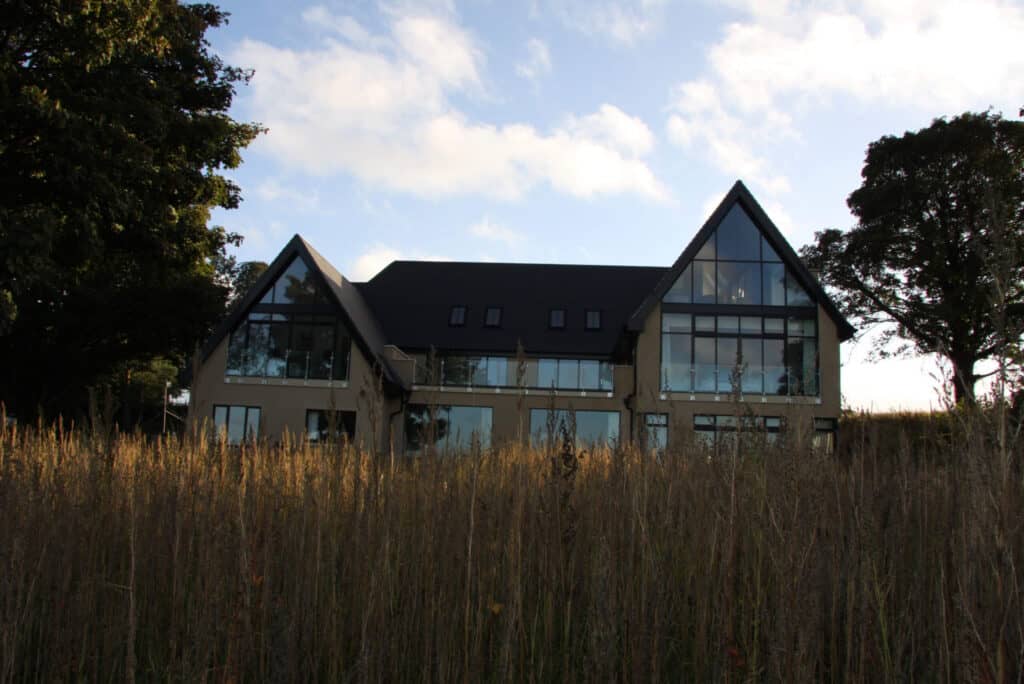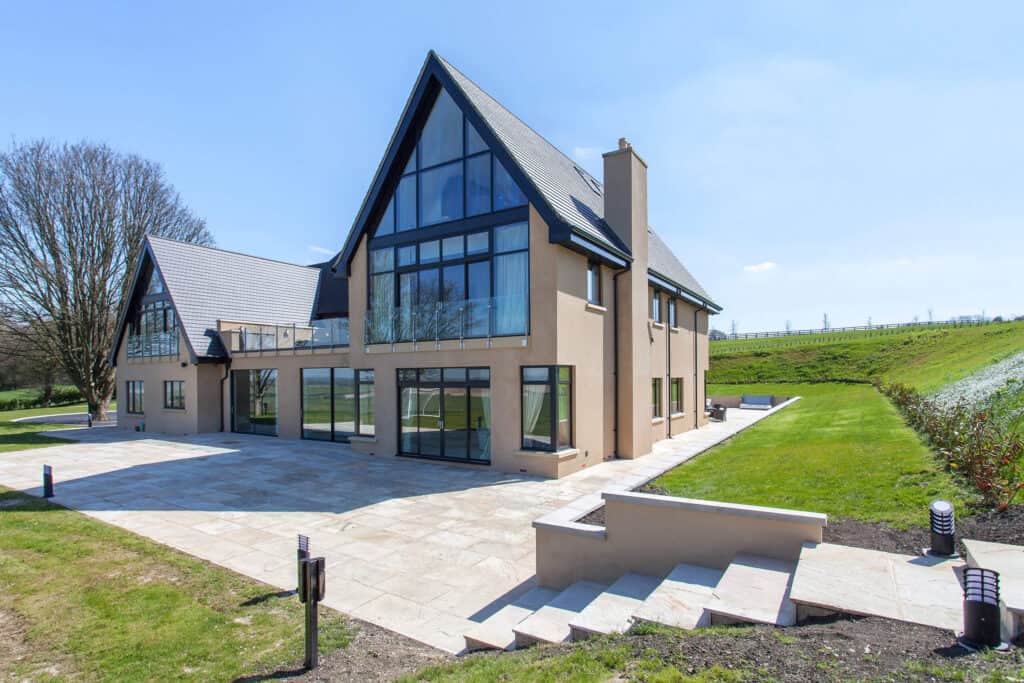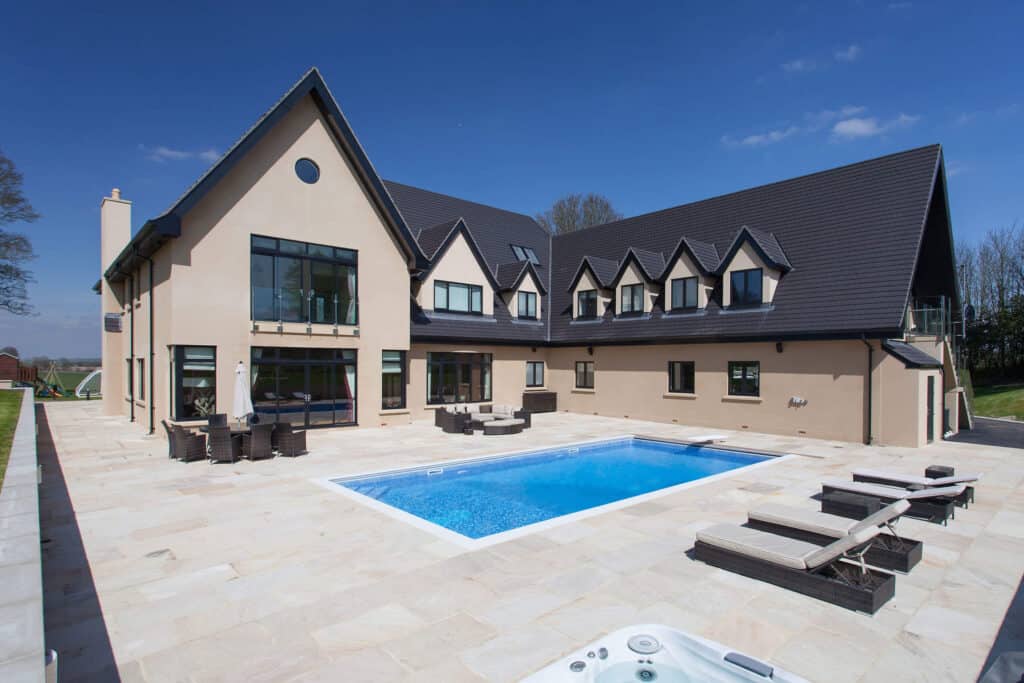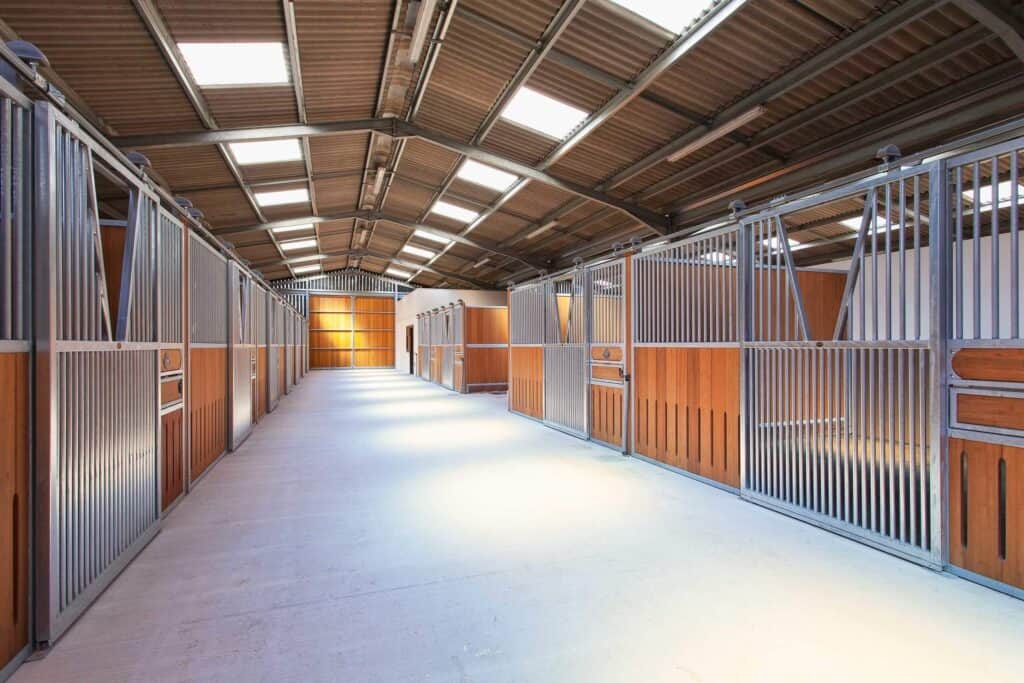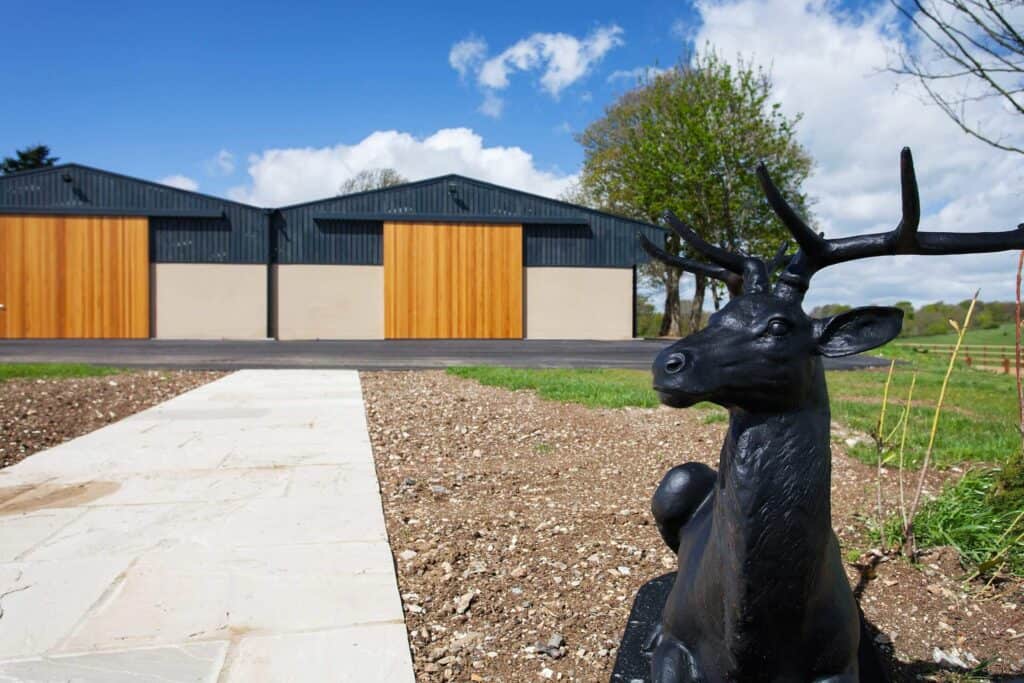The Project
Nestled within the The North Wessex Downs, a designated area of outstanding natural beauty (AONB), and overlooking the rolling hillside. RBD were commissioned to design a new build development in Lambourn, West Berks. This sustainable, contemporary house also incorporates a racing establishment to train racehorses, jockey accommodation with stables and administrative offices.
The residential accommodation element has been carefully considered both in terms of aesthetic qualities and functionality and is of noteworthy architectural merit. Significant attention has also been given to sustainable design in both the interests of the business and the environment.
The Residential element is completely unique in design and character with a cathedral like entrance hall running through the house and a winged staircase made of high-quality oak. The development was designed in response to the site and the path of the sun. The house has large areas of glazing to capture the breath- taking views beyond.
The racing establishment design reflects the need for excellent staff accommodation set in close proximity to 60 horse boxes. The proposed business, which centres around the training and care of extremely valuable horses, must attract top trainers and staff and be able to cater for and entertain racehorse owners who visit on a regular basis. The design was the result of lengthy consultation with well-respected and experienced individuals in the industry.
Traditional courtyard stables for 30 horses are proposed on the upper part of the site. The structure has rendered walls and a slate roof and includes an office, tack and boot room and two barns.
Two horse walkers located to the south of the courtyard stables were coloured green to blend into the landscape.
New staff accommodation is located on the lower ground, next to a steep bank. This structure, containing all residential facilities, has been carefully set back from the tree line towards the south. The new building has rendered and stone walls and a slate roof.
An American barn for 30 horses was constructed on the lower part of the site The structure has concrete panel and face brickwork walls, green Plastisol coated Ventair cladding and a natural grey fibre cement roof.
The development takes into account sustainable design considerations including photovoltaic cell and ground source heat pump technology for the residential accommodation. Rainwater harvesting and foul waste treatment systems were implemented for the whole development.
I cannot recommend Andy and the RBD team enough – absolutely fantastic. I engaged Andy on a major project for 6+ months. At all times he was super professional and knowledgeable. I was DELIGHTED with the results and will definitely use him again!
We are still early in the construction phase but we’re very pleased with the excellent design and advice we’ve received from Andy Willis so far. Our project has been complicated and unusual for various reasons and Andy has gone above and beyond in helping us. Andy has been great at steering us, drawing out what we were looking for and organising us and our priorities. Andy’s great at communicating regularly and we’ve been really pleased at his level of care and attention. We just can’t wait to see the final house, and then I’ll be back to update my review!
I employed RBD Architecture & Interiors to renovate a London townhouse into 2 apartments. Andy did a fantastic job of laying out the space in both properties resulting in both apartments achieving the full asking price in record time. His designs were clever, utilized all available space, and looked fantastic, quickly reminding me of the added value an architect can have on any property. I am currently doing another similar development in London as well as renovating a holiday home in the West Indies and using Andy for both properties was the obvious choice. I am excited to see both come to fruition. If you are looking for a smart and easy-to-work with architect who understands your brief and goes beyond that by offering intelligent solutions to any design problem, then look no further.
RBD have helped with the redesign of various parts (living areas, bedrooms, bathrooms) of our London home over recent years. We are delighted with the results – the mix of arresting vision and ‘fit for use’ practicality. We plan to continue using them in the future.
We were exceptionally pleased with the work done by RBD. They took into consideration all of our asks, came up with innovative solutions for maximizing storage, and worked extremely closely with the builders to ensure the entire process went smoothly from start to finish and that the end result was exactly what we were looking for from an aesthetic and practical perspective.
We were exceptionally pleased with the work done by RBD. They took into consideration all our asks, came up with innovative solutions for maximising storage, and worked extremely closely with the builders to ensure the entire process went smoothly from start to finish and that the end result was exactly what we were looking for from an aesthetic and practical perspective.
RBD Architecture & Interiors helped us with various works to our home including a new master suite. The service provided was excellent and their team have a real eye for detail – especially in Interior Design.
Andy and his team designed our beautiful new home combining creative design with very good ideas and the capacity to deliver on time, with great results.
We have been working with RBD for a while now during the redevelopment of our London offices. Their combined architectural and interior design capability has been particularly useful in meeting our objectives.
We used RBD Architecture & Interiors to design and manage the extensive redevelopment of our period Mews house in London. They helped us each and every step of the way including obtaining all the relevant planning consents.
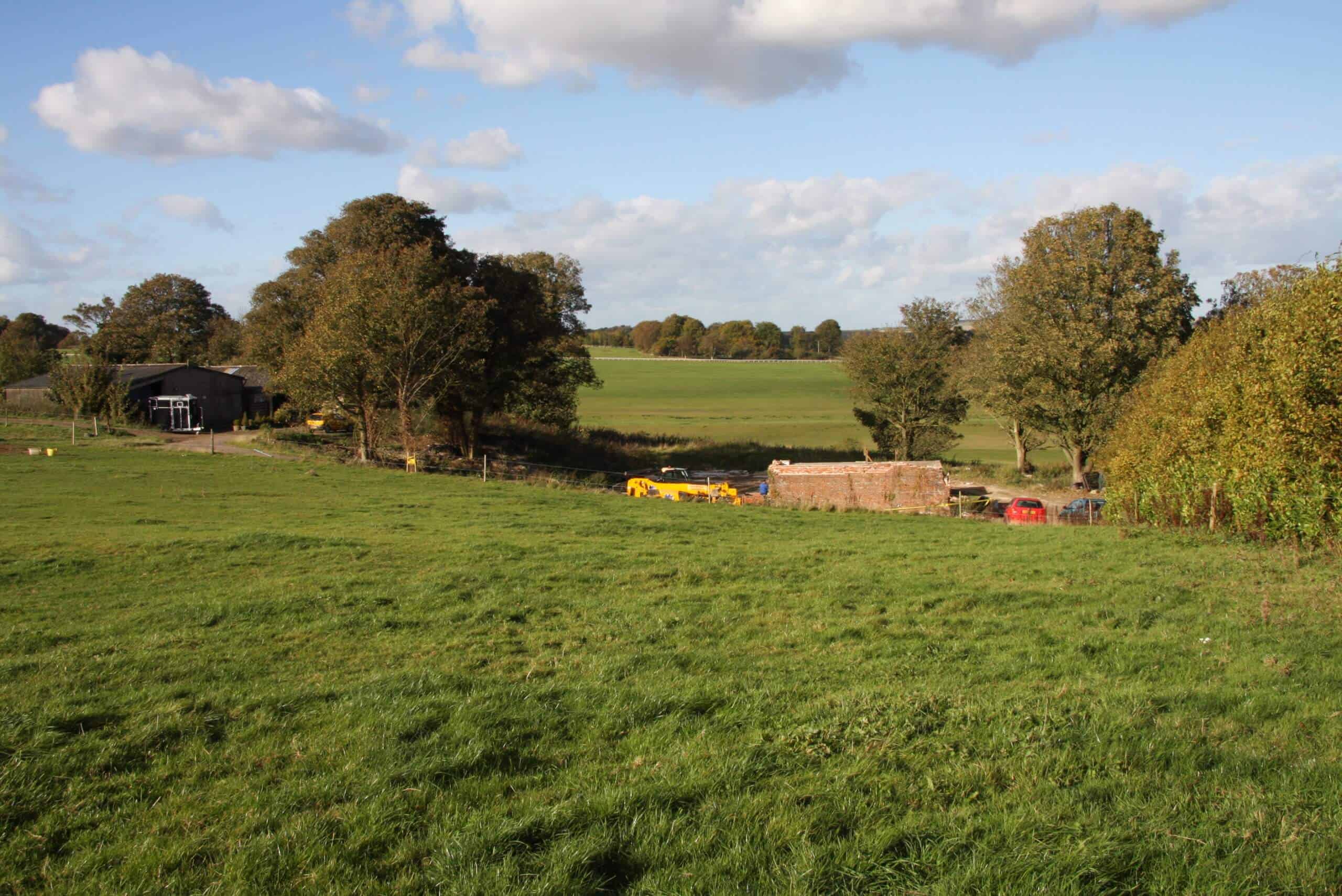
Set in a prime location within an area of outstanding natural beauty .
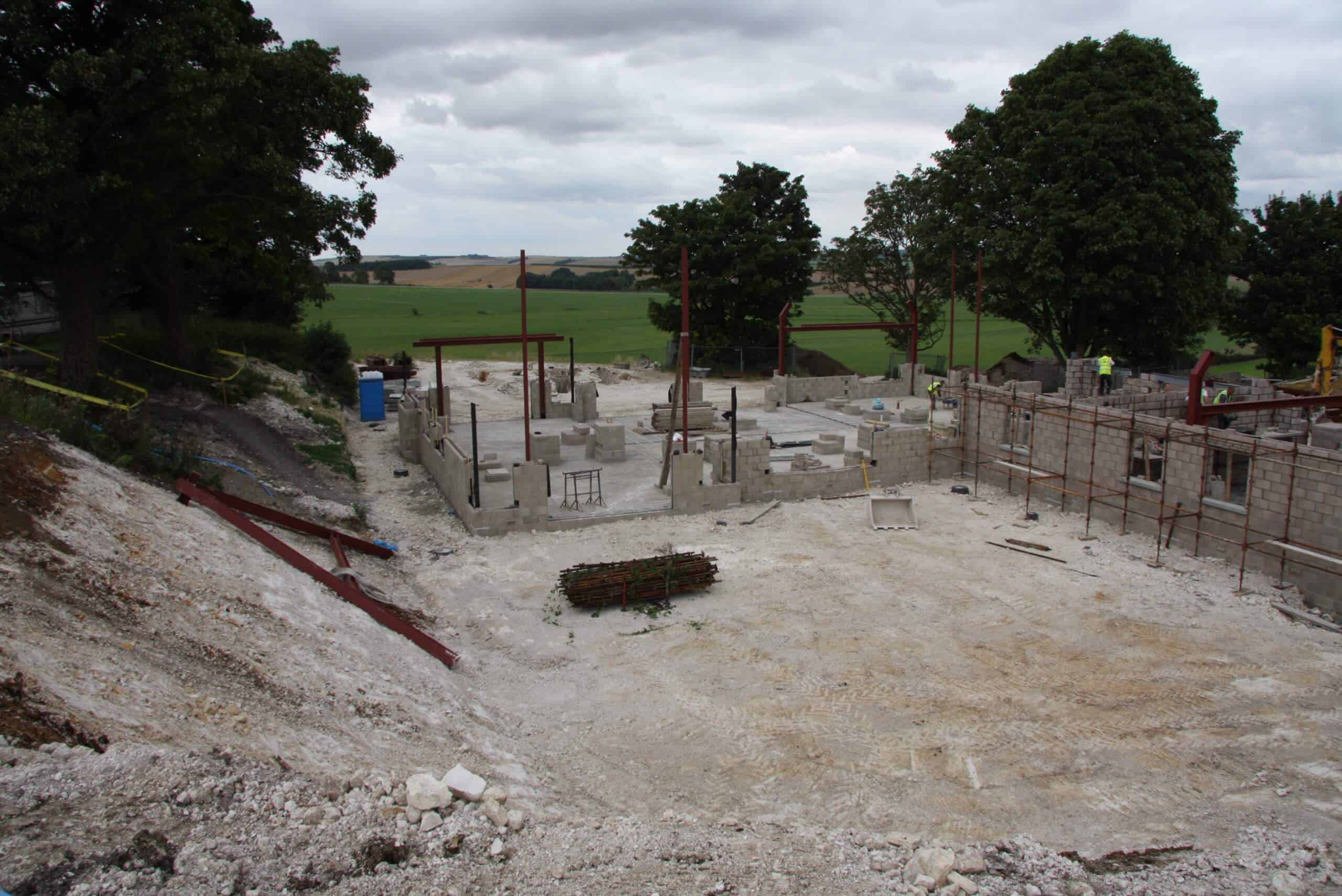
Biodigestor
A Biodigester was installed as they are superb solutions for rural homes. The biodigester system utilises organic waste, particularly animal and human excreta, to produce fertiliser and biogas. A biodigester consists of an airtight, high-density polyethylene container within which excreta diluted in water flow continuously and are fermented by microorganisms present in the waste. The fermentation process is anaerobic, i.e., it takes place without oxygen, and the bacteria responsible for decomposition are methanogenic (i.e., they produce methane, also known as biogas). The processed manure is an organic, pathogen-free fertiliser that is rich in nitrogen, phosphorus and potassium. The products are primarily for self-consumption on farms.
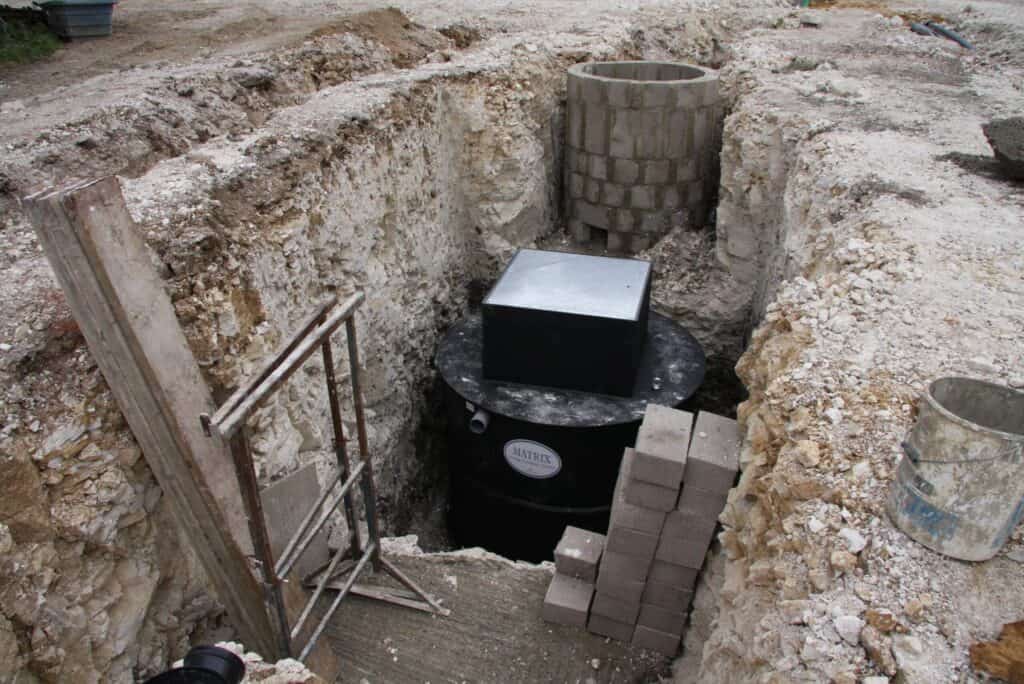
Ground Source Heat Pump
A ground source heat pump was just one of the natural renewable sustainable resources installed at our Berkshire New Build Home and Stable Yard Project.
Ground source heat pumps use solar heat that has been absorbed by the ground or air, which is transferred (pumped) and used to heat up residential or commercial buildings. Heat pumps are also effective for heating water. The technology used is similar to that of a refrigerator only this time the end result is heat instead of cold air.
In the case of a ground source heat pump, the energy comes from passing a glycol/water mix through pipework buried in the ground. The temperature of the earth tends to be very stable 1m deep, and there is minimal variation in this temperature across the seasons. The fluid in the pipework absorbs energy from its surroundings and delivers this to the heat pump within the property, where it is used in the process described in the earlier paragraph. After the energy has been given off to the heat pump the cooled fluid passes back into the pipework to collect more heat.
